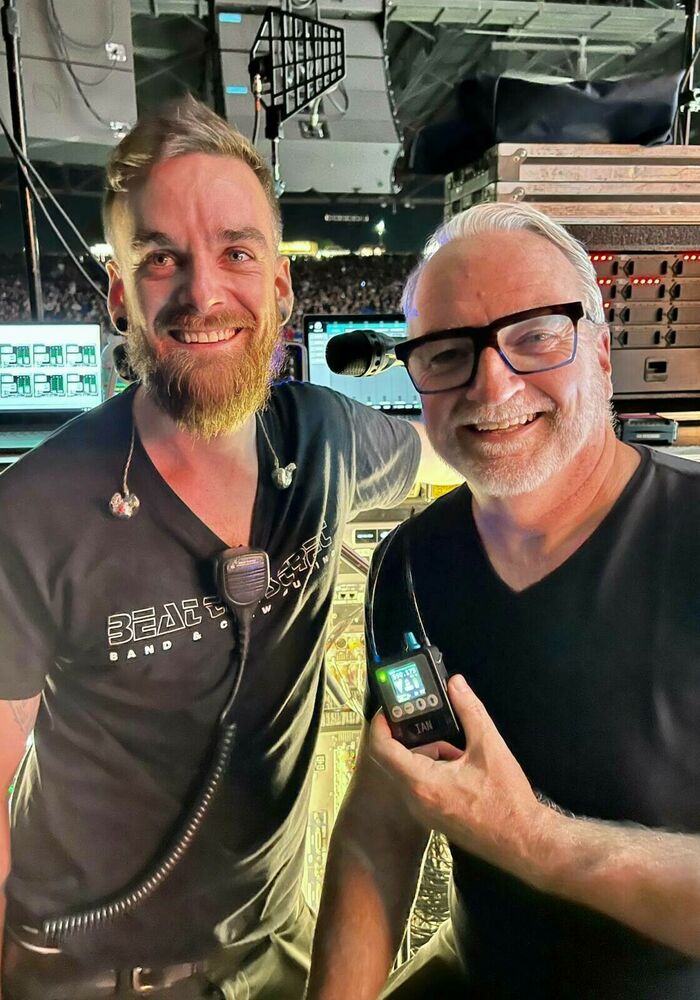Foo Fighters are one of the biggest bands in modern rock, which in turn translates to some spectacularly large arena shows. All of this pressure presents no fears to monitor engineer Ian Beveridge and RF technician Eiran Simpson, who keep the band’s ears happy with systems built around the Lectrosonics M2 Duet system, as Headliner discovers…
That’s not to say the pair have never experienced any technical hiccups during Foo Fighters’ live shows.
“Foo Fighters were playing Manchester Cricket Grounds, which is a huge venue, something like 60,000 capacity,” recalls Beveridge. “We were headlining, the previous band finished, and we were doing a set change. It was typical British weather – lots of rain – and all this water had pooled in the roof above the left wing of the stage. The roof collapsed and maybe 50 gallons of water hit the monitor console, which was a Yamaha PM5D at the time.
“The resulting digital noise was the loudest, most obnoxious thing I’ve ever heard — so bad that everyone’s fight-or-flight reflex kicked in. This was 10 minutes before the band was supposed to go on,” he shudders. “Dave Poynter, the monitor tech, was aware that the previous band had the same console, God love him. We borrowed their console, wired it up channel for channel, loaded a file into it and the band went onstage!”
Given the size of the venues the Foo Fighters play, range is a paramount concern, or rather would be if the M2 system wasn’t so tenacious. “With just the one antenna and M2C coupler covering the band, we did a pre-production show at Shoreline Amphitheatre in California,” says Beveridge. “The transmitters ran on just 10 milliwatts [output power]. Eiran could walk to the very back fence of the venue, and the system still worked perfectly. I prefer this because systems that rely on excessive output power tend to raise the noise floor.”
Simpson adds that thanks to the full-spectrum capability offered by the digital nature of the M2 system, he has one less headache: “Because they’re wideband, the transmitters and receivers are especially suited to high-RF environments and extensive touring. They cover the full legal range of possible frequencies around the world, which is important as demand for wireless range increases while available spectrum decreases.”
“Every band member has a tech, and every tech has a mix, fed from stereo subgroups on the monitor console,” Beveridge elaborates. “I get every tech to have a duplicate of their band member’s mix, which is Y-split from the same stereo pair but into a separate transmitter-receiver chain.


